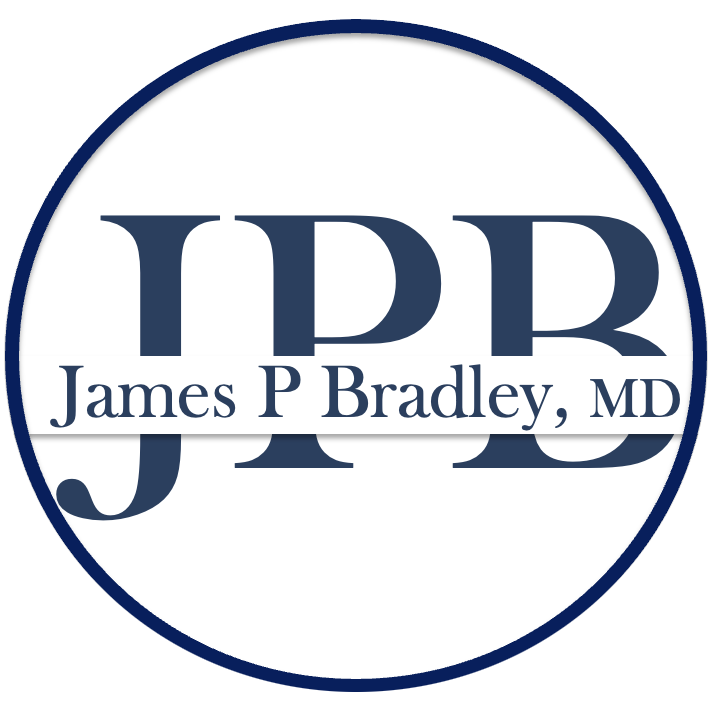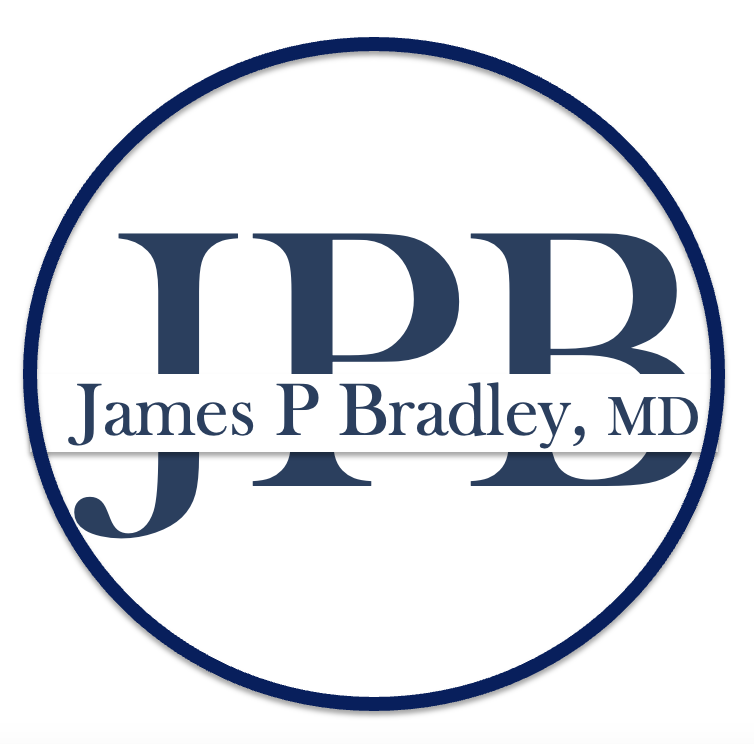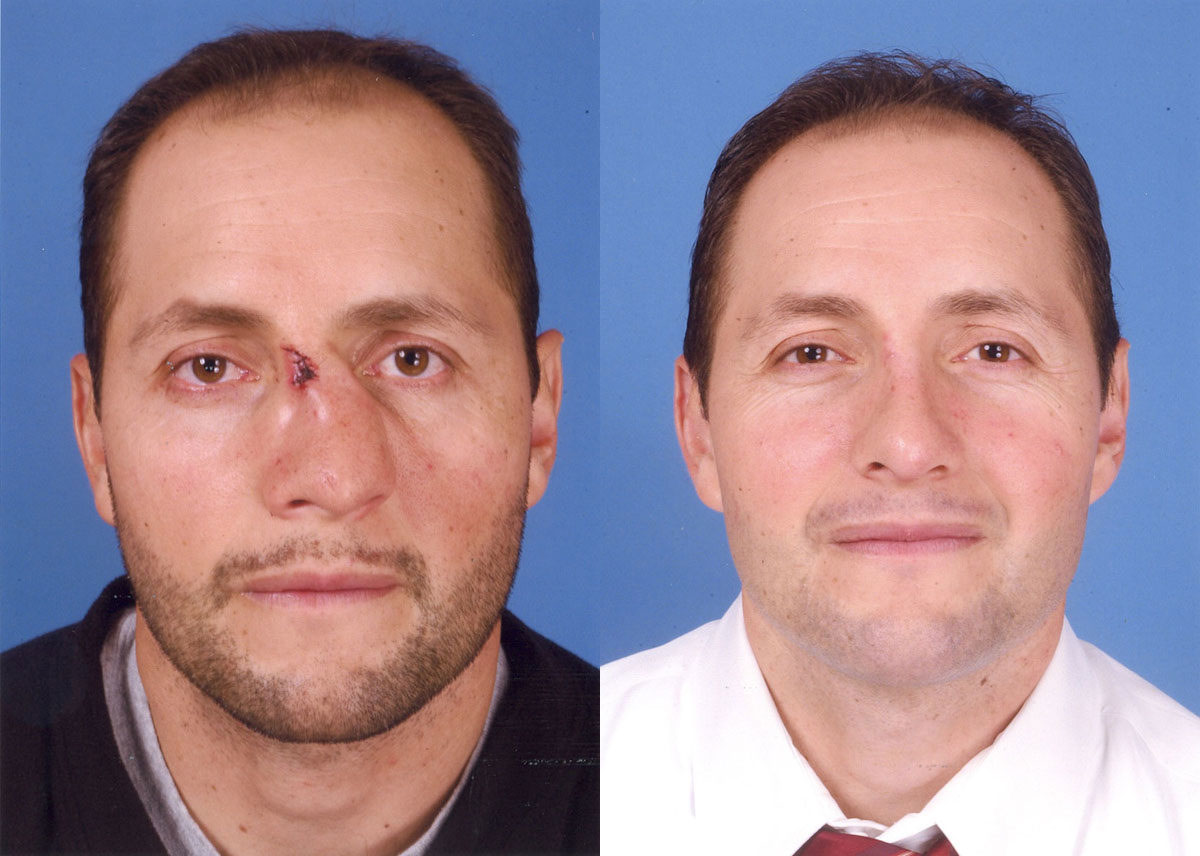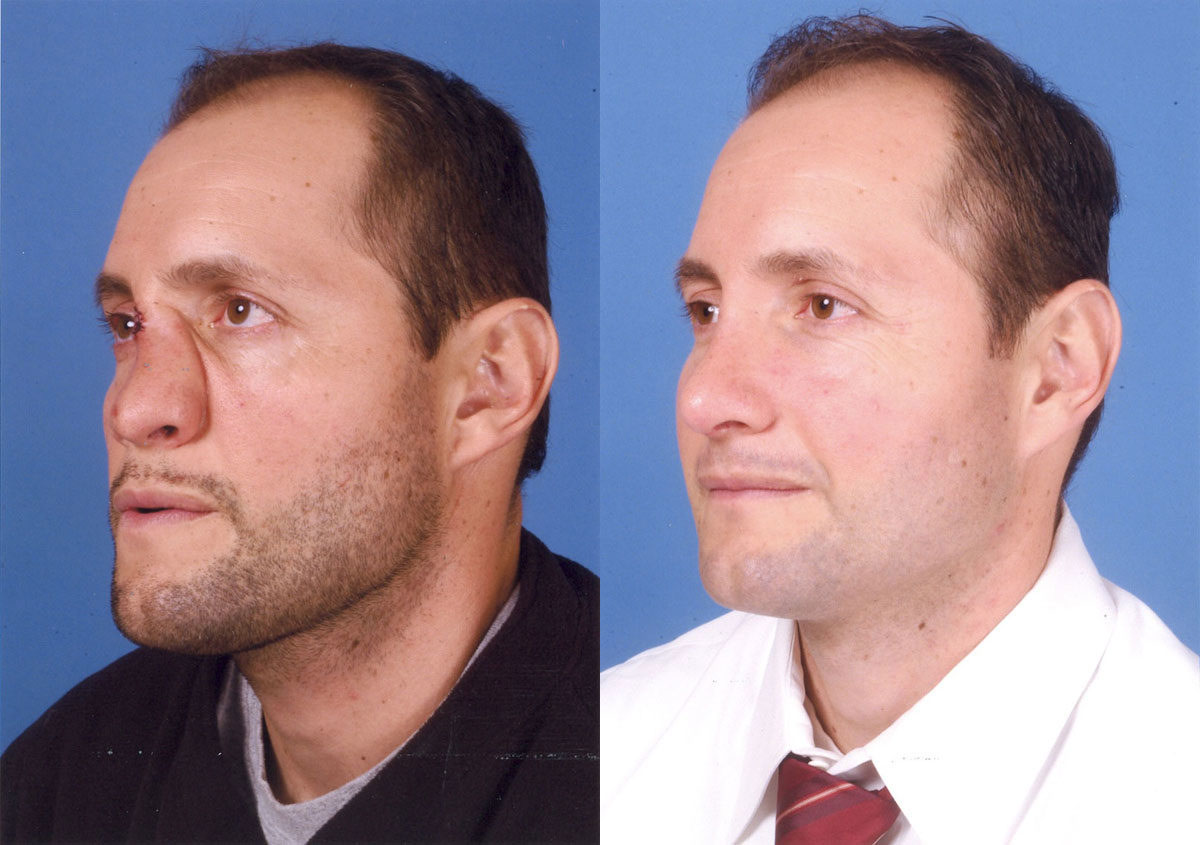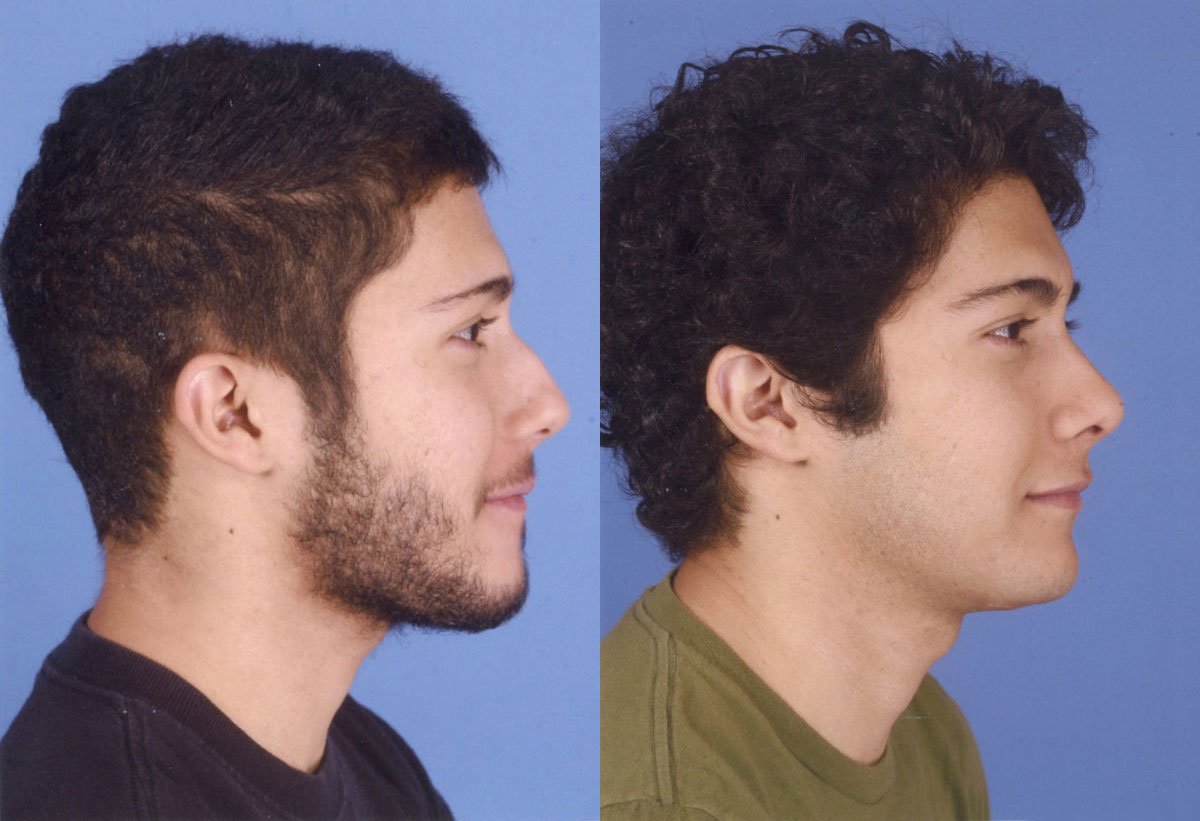Conveniently located to serve New York City, Queens, Bronx, Brooklyn, Long Island
Rhinoplasty
Rhinoplasty, or nasal reshaping, is one of Dr. Bradley’s most common procedures in New York. It is also one of his favorites! Rhinoplasty requires great attention to detail to achieve consistent natural results. This is one procedure where patients should choose their surgeon wisely so that it is done correctly the first time. If a revision or re-do rhinoplasty is needed, the procedure is even more challenging.
Ideal Candidates
If you are in good overall health and do not have any circulatory or healing problems, then you may be an ideal candidate for rhinoplasty. For teenagers, nose surgery is recommended if the nasal structure has reached its adult size—usually age 15 or 16 for girls and a year later for boys. Ideally, patients are non-smokers or are willing to quit prior to the procedure for faster recovery.
Your Rhinoplasty Consultation
At your consultation, Dr. Bradley will have a detailed discussion about your preferences and concerns. He will also do a full-facial evaluation so that an exact precise plan can be constructed that will allow you to get the natural result you deserve. Dr. Bradley will follow you for an entire year after the procedure to make sure the healing goes well.
Your medical history will be thoroughly reviewed to ensure you are compatible with this procedure. Photographs will be taken, and additional diagnostic tests may be requested. Preparation, anesthesia options, and potential risk factors will be discussed to give you a better understanding of the process.
Rhinoplasty Objectives
- Individualized correction of nasal shape based on facial features
- Improvement in nasal breathing and sleep apnea
- Removal of nasal bridge (dorsal) hump
- Creation of a refined nasal tip
- Symmetrical nostrils
Rhinoplasty Techniques
Nose surgery is a complex procedure that changes from case to case and may involve several different techniques. The exact techniques that will be utilized in your case will be discussed in advance during your initial consultation.
Rhinoplasty Options

- Cosmetic Nasal Reshaping: Cosmetic improvements depend on a patient’s concerns. For a prominent dorsal hump (bump on the bridge), cartilage and bony reduction are used followed by internal spreader grafts fashioned from septal cartilage. For nasal deviation (twisted nose), cartilage and bony straightening are performed. Other aesthetic refinements are often needed and customized for each patient.
- Functional Rhinoplasty: Nasal breathing and obstructive sleep apnea are the main concerns of patients who are candidates for functional rhinoplasty. A full office assessment will determine which techniques are necessary for the relief of nasal obstruction. Techniques include: Septoplasty, submucous resection of deviated septum and bone, spreader grafts, inferior turbinate reduction, and opening of vestibular stenosis.
- Secondary (‘Redo’) Rhinoplasty: Dr. Bradley is an expert in the field of rhinoplasty and is often referred to patients who previously had a rhinoplasty procedure, but still desire improvement in nasal appearance or nasal breathing. These cases are typically more complicated than ‘primary’ rhinoplasty procedures and usually require reconstruction with cartilage grafting.
Preparation for Nose Surgery

Prior to your rhinoplasty surgery in New York, you will be given instructions to help you prepare, including avoiding, adjusting, or finding alternatives for specific medicines as directed.
You will need to stop smoking weeks prior to your surgical procedure. You will be asked to avoid taking any herbal supplements, aspirins, or anti-inflammatory medications. Make sure to take a few days off work and arrange transportation home for after the nose surgery.
The Rhinoplasty Procedure

Anesthesia is administered to eliminate the chance of discomfort during the rhinoplasty surgery. Depending on the technique, the incision is made either on the inside of the nose or between the nostrils. Bone, soft tissue, and cartilage are then removed, repositioned, or reshaped to achieve the desired results. During the procedure, cartilage or bone grafts may be used to bolster the strength of the nasal architecture in weaker areas. A graft is a section of tissue from another region of the patient’s body. Cartilage grafts can be harvested from three regions: the ears, the ribs, and the nasal septum. Once harvested, they are shaped according to their specific intended use.
Once the process is complete, the incisions are closed with surgical sutures. The whole procedure can take an hour or more, depending on the difficulty of the surgery.
FAQ
What is a good reason to have a rhinoplasty? Should I have one?
If your nose is too large or does not fit with the rest of your face;
If you have trouble breathing through your nose (during sleep or exercising);
If your nose is crooked or misaligned (from trauma).
What is the recovery after a rhinoplasty like?
You will have a plastic splint on your nose the first week to reduce swelling;
Some people experience bruising around the eyes; Icing and head elevation will reduce this.
Although the pain is much less than expected, you will feel congested; nasal sprays will be started after a week to reduce this feeling. Avoid blowing your nose. If you must blow your nose, be extremely gentle, as the tissues will be temporarily weakened during the healing process.
Patients must typically stay home from work for around one week. It will be necessary to avoid all physically taxing activities until cleared to resume them; these can include exercise and sports. Additionally, it is best to avoid all activities that could potentially result in nasal trauma.
How can I ensure that I get the final result that I want?
The best advice is to find a plastic surgeon with a lot of experience with rhinoplasty and one that listens to your concerns and expectations during the preoperative consultations.
Although you will be presentable in a few weeks, you will not see your final result for months and months. If you compare images at 6 weeks postoperative to images after one year, you will see improvements at one year since the swelling has resolved.
How much does Nose Surgery cost?
There is no such thing as a one-size-fits-all nose job, and because of this, nose reshaping surgery varies in price depending on the details of each specific case. Rhinoplasty cost is determined by factors such as the techniques used, the type of anesthesia administered, and the overall time required to perform the surgery.
Schedule your Appointment Today
Numerous patients choose double board-certified plastic surgeon, Dr. James P Bradley, for their nose surgery in New York. Dr. Bradley has the skill and experience required to achieve the results you deserve, so contact our office today to set up your consultation.

